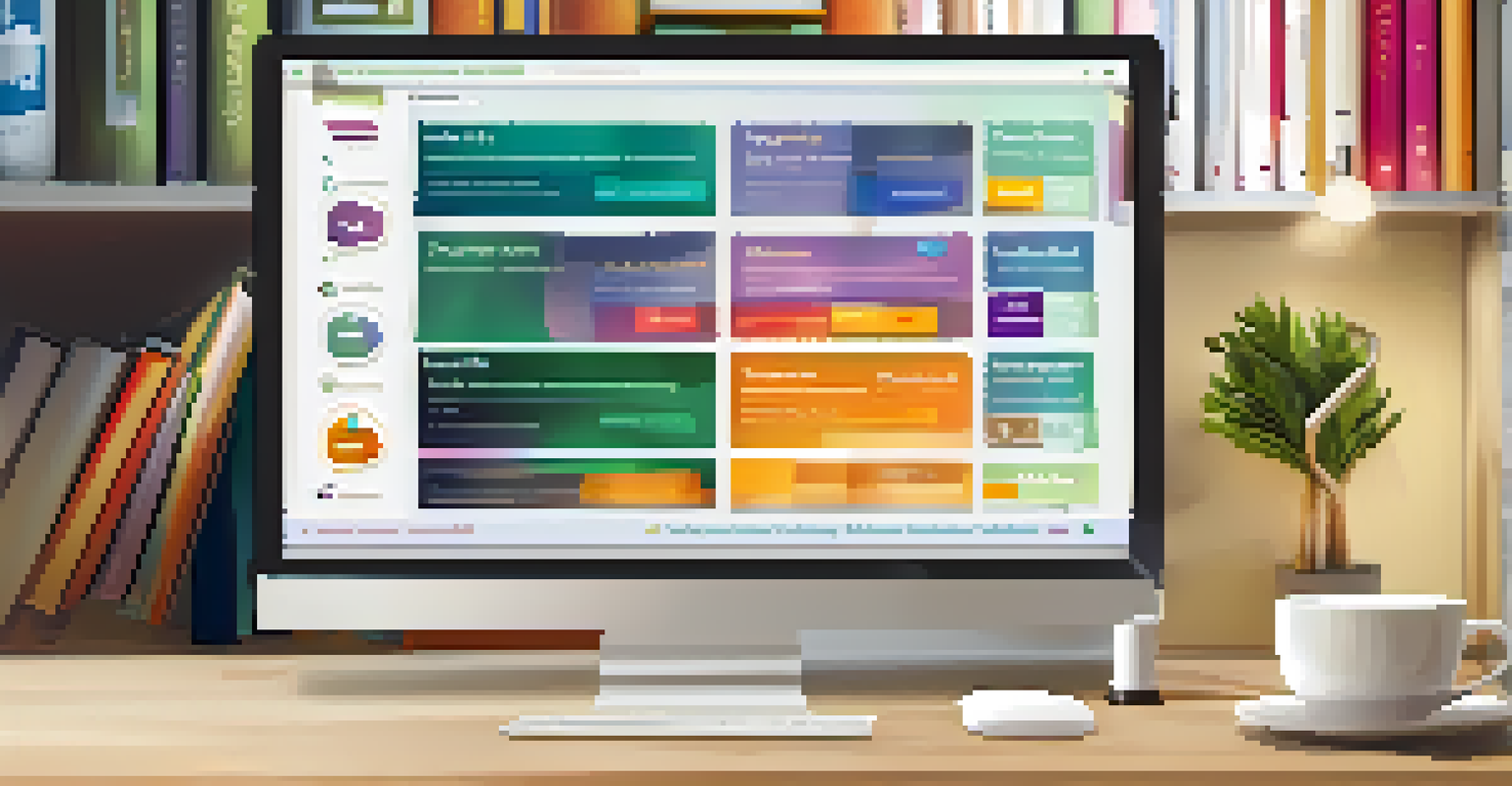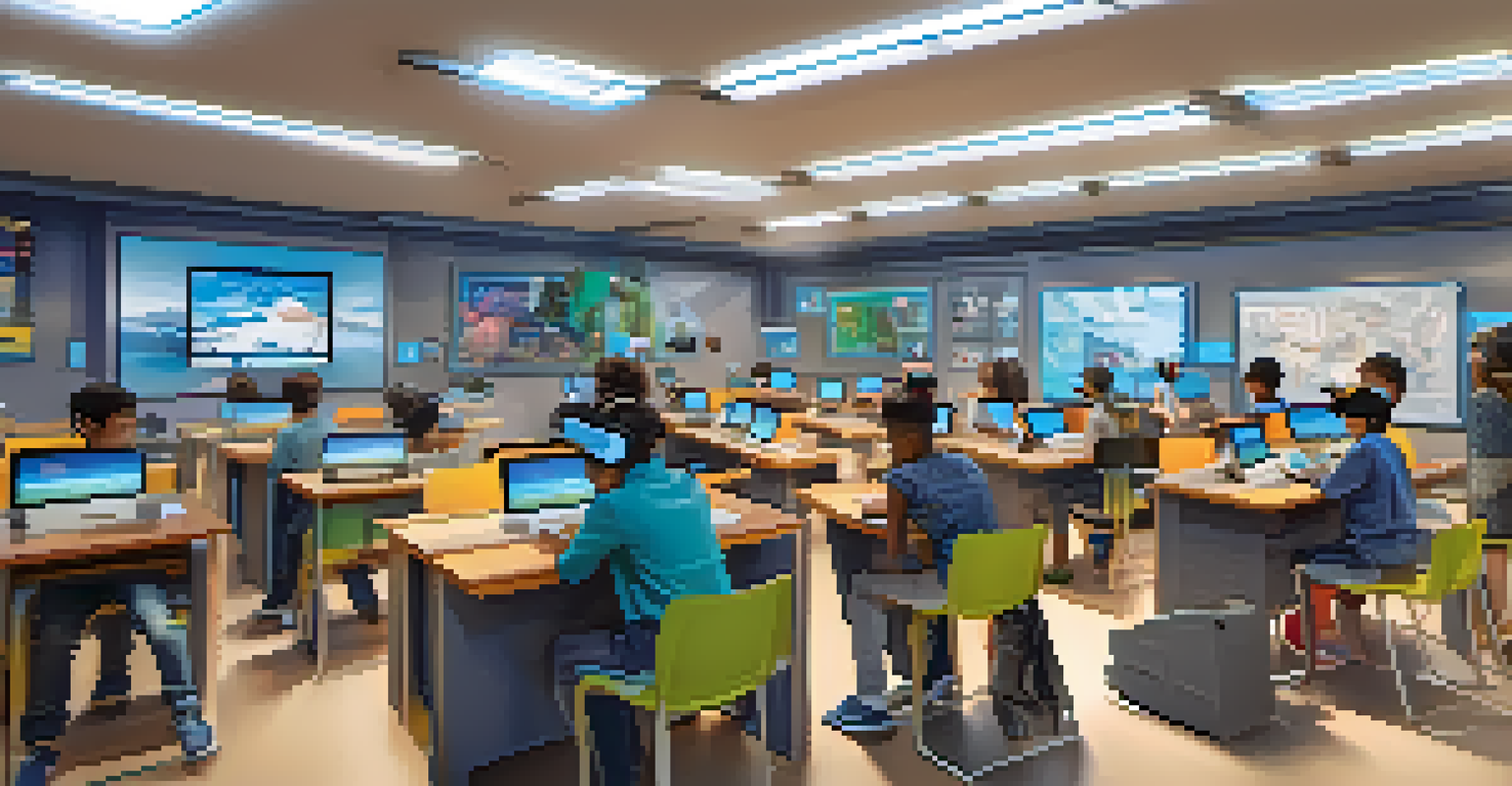Understanding the Learning Experience Design Process

What is Learning Experience Design (LXD)?
Learning Experience Design, often abbreviated as LXD, is an approach that focuses on creating engaging and effective learning experiences. It combines elements from instructional design, user experience, and educational psychology to ensure that learners not only acquire knowledge but also enjoy the process. Think of it like planning a great dinner party, where every element—food, ambiance, and conversation—is carefully curated to delight your guests.
The greatest gift is a passion for reading. It is cheap, it consoles, it distracts, it excites. It gives you a world to think about, a place to go when you have to stay where you are.
At its core, LXD emphasizes the learner's journey. It considers their needs, motivations, and how they will interact with the content. For example, if you're teaching a group of adult professionals, you might lean towards practical applications of knowledge rather than theoretical concepts, making the experience more relevant.
Ultimately, LXD strives to create meaningful and memorable learning experiences. Just like a well-crafted novel keeps readers turning the pages, effective learning design captivates learners and encourages them to dive deeper into the subject matter.
The Importance of Empathy in LXD
Empathy is at the heart of Learning Experience Design. Understanding your learners' backgrounds, preferences, and challenges is crucial to creating a meaningful experience. It’s similar to being a good host: you wouldn’t serve a spicy dish to someone who can’t handle heat without considering their tastes and comfort levels.

By putting yourself in the learners' shoes, you can better tailor your content and delivery methods. For instance, if your audience comprises visual learners, incorporating infographics and videos can significantly enhance their understanding. This empathetic approach not only boosts engagement but also fosters a supportive learning environment.
Empathy Enhances Learning Design
Understanding learners' backgrounds and preferences allows for tailored content that boosts engagement and creates a supportive environment.
Furthermore, empathy helps you anticipate potential barriers that learners might face. By addressing these challenges upfront, you can create a smoother path for your audience to navigate, allowing them to focus on learning rather than struggling with the material.
Identifying Learning Objectives Clearly
Setting clear learning objectives is like drawing a map before embarking on a journey. It gives both you and your learners a clear destination and helps in measuring progress along the way. Instead of saying, 'Learn about marketing,' a more specific objective might be, 'Understand the basics of digital marketing strategies.'
Tell me and I forget. Teach me and I remember. Involve me and I learn.
These objectives should be specific, measurable, achievable, relevant, and time-bound (SMART). This framework ensures that you’re not just throwing information at learners but guiding them toward specific outcomes. For example, a well-defined objective might involve learners developing a marketing plan by the end of the course.
Additionally, clear learning objectives help you choose the most appropriate content and methods for your audience. With a solid roadmap in hand, you can design experiences that effectively lead learners from point A to point B, ensuring they reach their intended goal.
Designing Engaging and Interactive Content
In the digital age, engaging and interactive content can make all the difference in a learner's experience. Just as a captivating movie draws in its audience, well-designed learning materials can keep learners interested and invested. Incorporating elements like quizzes, simulations, and discussion boards can transform mundane lessons into dynamic experiences.
For instance, imagine a course on coding that includes hands-on exercises where learners can write and test their code in real-time. This interactive approach not only reinforces knowledge but also allows learners to apply what they’ve learned immediately, making the experience more impactful.
Clear Objectives Guide Learning
Setting specific, measurable learning objectives provides a roadmap for both the instructor and learners, ensuring effective outcomes.
Furthermore, the use of storytelling in your content can make complex subjects more relatable and easier to understand. By weaving narratives into your lessons, you engage learners on an emotional level, making the information stick long after the course is over.
Choosing the Right Delivery Methods
Selecting the appropriate delivery methods is crucial for effective Learning Experience Design. Whether it's in-person workshops, online courses, or blended learning, the method should align with the learning objectives and audience preferences. Think of it as choosing the right vehicle for a road trip; the destination remains the same, but the journey can feel vastly different depending on the ride.
For example, if your learners are busy professionals, a self-paced online module might be more suitable than a traditional classroom setting. This flexibility allows them to learn at their own convenience, which can lead to better retention and satisfaction.
Moreover, combining various delivery methods can cater to diverse learning styles within your audience. By offering a mix of video content, interactive activities, and live discussions, you create a richer learning experience that keeps everyone engaged.
Evaluating and Iterating on the Design
Evaluation is a crucial step in the Learning Experience Design process. Just as a chef tastes their dish before serving, you should assess the effectiveness of your learning experiences through feedback and assessments. This not only helps identify areas for improvement but also ensures that your content meets the needs of your learners.
Utilizing tools like surveys, quizzes, and focus groups can provide valuable insights into how learners are experiencing the design. For instance, if many learners struggle with a particular topic, it may be a sign that the content needs to be adjusted or presented differently.
Interactive Content Engages Learners
Incorporating engaging and interactive elements in learning materials transforms experiences and reinforces knowledge retention.
The cycle of evaluation and iteration is ongoing. By continually refining your designs based on feedback, you can enhance the learning experience and adapt to changing needs, ensuring that your educational efforts remain relevant and effective.
The Future of Learning Experience Design
As technology evolves, so does the field of Learning Experience Design. Emerging trends such as artificial intelligence, virtual reality, and personalized learning are shaping the future of education. Imagine a world where learners can immerse themselves in a virtual environment to practice real-world skills, making the learning process both engaging and effective.
Additionally, data analytics plays a significant role in understanding learner behavior and preferences. By leveraging data, designers can create personalized learning paths that cater to individual needs, ensuring that every learner has a tailored experience.

Ultimately, the future of LXD is about creating more inclusive, engaging, and effective learning experiences. As we embrace new technologies and methodologies, the possibilities for enhancing education are limitless, paving the way for a more dynamic learning landscape.